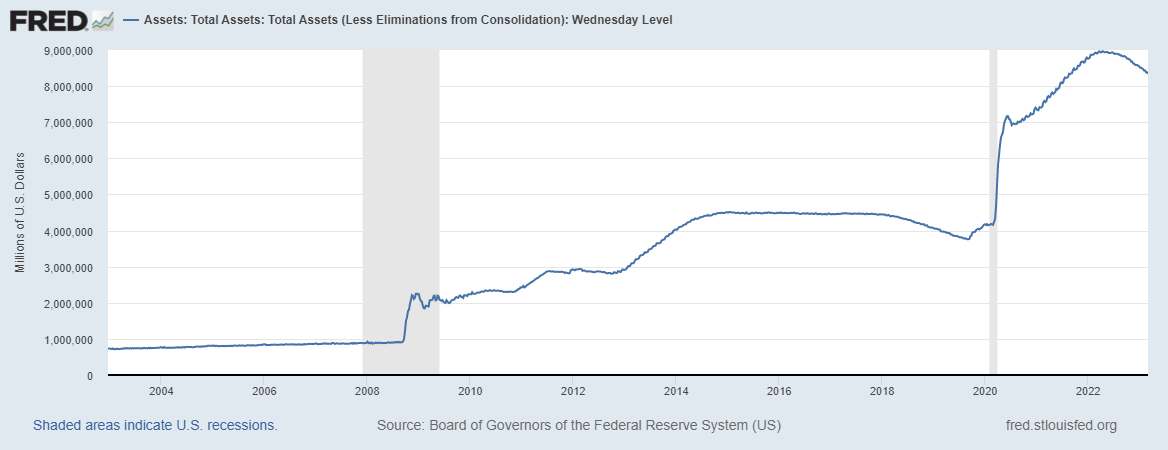Waiting for financial collapse is hardly a fast-moving process, nor something to look forward to. But the winding down of the balance sheet and eventual bust to follow must be explained to the public. Inflation metrics are still higher than anyone would like. The stock market still flounders. There is no end in sight.
Continuing from last month’s QT countdown: From Feb 1 to Mar 1 the US Treasuries (UST) balance decreased by $62 billion and the Mortgage-Backed Securities (MBS) by $15 billion.

The Fed’s balance sheet shrinkage is ever so slight but still underway, while the 10-year minus 3-month Treasury Yield continues to fall into uncharted territory when looking at the last 40 years.

With the gray bards denoting formal recessions, the whole world should be waiting for the next big event, black swan, global financial crisis, or any other name to describe a stock market crash and economic collapse.
Even those relatively new to economic ponderings should on some level understand why government and central bank intervention can only cause more harm than good. Consider remarks by Governor Michelle W. Bowman at a workshop on “Market Disfunction” made Friday:
It’s a pleasure to be with you today and to be part of this discussion on how central banks can support the effective functioning of financial markets.
Inexplicable market dysfunction requiring market intervention is a longstanding narrative. According to the Governor, the Fed plays an instrumental role in the economy, as explained:
During periods of financial system stress, the Federal Reserve can use additional tools, such as lending facilities and open market operations, to directly support the effective functioning of key financial markets and the flow of credit throughout the economy.
What she fails to disclose is the Fed’s role in causing these periods of financial distress. We are currently in a period of financial stress, it’s just that things have not become “bad enough,” so we are not in a period of panic.
Looking at the above two charts, few seem able to recall the 2018 to 2019 period where the Fed tightened its balance sheet, not too different from what it’s doing today. The problem is that this was only five years ago, which may as well have been a lifetime ago in economics; it’s also one of the reasons to do the monthly official QE Countdown.
Naturally, the yield curve in 2019 and 2020 also went into negative territory, also not too different from what it’s doing today.
Then, 2020 happened. They blamed Covid for that crisis, the same way they blamed evil lending practices, the collapse of Bear Stearns, and AIG for the 2007-09 crisis. Something else, other than the Fed, will take the blame for the next crisis.
The Governor tells us that the Fed monitors these periods of financial distress. But what she’s not telling the public is that the Fed is primarily responsible for these periods of panic. So far we can enjoy some serenity in the eye of the storm. I continue to remind as many people as possible that great distress is at our front door, but things are still good enough where the Fed doesn’t have to step in (through monetary inflation and low rates) to “support the effective functioning” of the market; and so, the countdown to crisis goes on.

